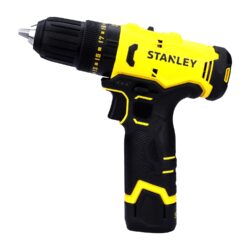Pneumatic Tool Maintenance Checklist for Industrial Facilities
Pneumatic tools are the backbone of many industrial operations, offering power and precision for various tasks. From drilling and grinding to assembly and finishing, these tools play a crucial role in maintaining productivity and efficiency in industrial facilities. However, like any mechanical equipment, pneumatic tools require regular maintenance to ensure optimal performance and longevity. In this blog post, we’ll provide a comprehensive pneumatic tool maintenance checklist tailored for industrial settings, covering essential steps to keep your tools in top condition.
Understanding Pneumatic Tools
Before delving into maintenance procedures, it’s essential to have a basic understanding of pneumatic tools and how they operate. Pneumatic tools utilise compressed air to generate power, making them lightweight, versatile, and capable of delivering high torque or speed. Common pneumatic tools include impact wrenches, air drills, grinders, sanders, and nail guns, among others. Proper maintenance is crucial to prevent malfunctions, extend tool life, and ensure safety in industrial environments.
Pneumatic Tools Maintenance Checklist
- Regular Inspection: Conduct visual inspections of pneumatic tools before and after each use. Look for signs of wear, damage, or leaks in hoses, fittings, and components. Address any issues promptly to prevent further damage.
- Cleaning: Keep pneumatic tools clean and free of debris, dust, and moisture. Use compressed air or a clean cloth to remove dirt and build-up from external surfaces. Pay special attention to vents, exhaust ports, and air intakes.
- Lubrication: Lubricate pneumatic tools regularly to reduce friction, minimise wear, and prevent corrosion. Refer to the manufacturer’s recommendations for the appropriate type and frequency of lubrication. Apply lubricant to moving parts, such as bearings, gears, and pistons.
- Filter Maintenance: Check and clean or replace air filters to ensure proper air quality and flow. Clogged or dirty filters can restrict airflow, leading to decreased performance and potential damage to pneumatic tools.
- Regulator Adjustment: Monitor and adjust air pressure regulators to maintain the recommended operating pressure for pneumatic tools. Excessive or insufficient air pressure can affect tool performance, efficiency, and safety.
- Hose Inspection: Inspect pneumatic hoses for wear, kinks, cracks, or leaks. Replace damaged hoses immediately to prevent air leaks, loss of pressure, and potential hazards.
- Tool Calibration: Periodically calibrate pneumatic tools to ensure accurate performance and consistent results. Use precision instruments or calibration kits provided by the manufacturer for this purpose.
- Storage: Store pneumatic tools in a clean, dry environment away from extreme temperatures, moisture, and contaminants. Use protective cases or toolboxes to prevent damage during transportation and storage.
- Training and Education: Provide training to operators and maintenance personnel on proper handling, usage, and maintenance of pneumatic tools. Emphasise safety precautions, ergonomic practices, and adherence to maintenance procedures.
- Documentation: Keep detailed records of pneumatic tool maintenance activities, including inspections, repairs, replacements, and calibration. Maintain a maintenance log or database to track tool history and performance over time.
Pneumatic Tools Safety Checklist
- Always Disconnect from Air Supply When Not in Use: Before performing any maintenance or adjustments, always disconnect pneumatic tools from the air supply to prevent accidental activation and potential injuries.
- Complete Visual Inspection of Tool: Prior to use, visually inspect pneumatic tools for any visible damage, loose parts, or signs of wear. Do not operate damaged or malfunctioning tools.
- Inspect Feed System: Verify that the feed system is clear of obstructions and properly aligned. Ensure that fasteners and components are securely in place.
- Check Lines and Compressor for Moisture: Monitor air lines and the compressor for moisture build-up, leaks, or damage. Address any issues promptly to maintain air quality and tool performance.
- Lubricate Tools Regularly: Apply lubricant to moving parts of pneumatic tools as per manufacturer recommendations. Proper lubrication reduces friction, prolongs tool life, and enhances performance.
- Clean Tools at End of Day: After each use, clean pneumatic tools to remove debris, dust, and build-up. Pay special attention to vents, exhaust ports, and air intakes to maintain optimal airflow and cooling.
Conclusion
In conclusion, proactive maintenance is essential for ensuring the reliable operation, longevity, and safety of pneumatic tools in industrial facilities. By following a comprehensive maintenance checklist and implementing regular inspection, cleaning, lubrication, and calibration procedures, you can optimise the performance and efficiency of your pneumatic tools while minimising downtime and repair costs. Remember, a well-maintained pneumatic tool is not only a valuable asset but also a testament to your commitment to quality, productivity, and safety in the workplace.









